
- Home
- Travel Packages
- Top Destination
-
Travel Attraction
By Category
Top Attraction

- Travel Agents
- Car Rentals
- Hotels
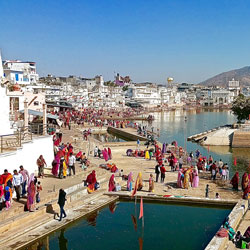
About The Pushkar (11 Kms from Ajmer): Temple The Pushkar Temple, located just 11 kilometers from Ajmer, is a significant Hindu pilgrimage site dedicated to Lord Brahma, the creator of the universe according to Hindu mythology. It is one of the very few temples in the world that is devoted to Lord Brahma, making it a unique and revered place of worship for Hindus. Architecture of Pushkar The Pushkar Temple is a beautiful piece of architecture with a distinct red-colored spire that can be seen from afar. The temple is built in the Nagara style of architecture with intricate carvings and sculptures adorning its walls. The sanctum sanctorum of the temple houses a mesmerizing idol of Lord Brahma along with other deities. The temple complex also has various smaller shrines dedicated to different gods and goddesses. History The history of the Pushkar Temple dates back to ancient times and is deeply rooted in Hindu mythology. According to legend, Lord Brahma performed a yajna (a fire ritual) at the site of the temple, which led to the creation of the Pushkar Lake. The temple was later built to commemorate this significant event. Over the centuries, the temple has been renovated and restored several times, but its spiritual essence and significance have remained unchanged. Best Time To Visit The best time to visit the Pushkar Temple is during the months of October to March when the weather is pleasant and conducive for exploring the temple complex and taking part in various religious activities. The annual Pushkar Camel Fair, held in November, is also a great time to visit the temple as it attracts a large number of pilgrims and tourists from all over the world. How To Reach The Pushkar Temple is located just 11 kilometers from Ajmer, which is well-connected by road and rail to major cities in India. The nearest airport is in Jaipur, which is around 146 kilometers away from Pushkar. From Ajmer, visitors can hire a taxi or take a local bus to reach the temple. The temple is located close to the famous Pushkar Lake, making it a convenient and easily accessible pilgrimage site. Significance Of The Pushkar The Pushkar Temple holds great religious and cultural significance for Hindus. It is believed that taking a dip in the holy waters of the Pushkar Lake near the temple can cleanse one's sins and lead to spiritual purification. The temple is also a popular destination for performing various rituals and ceremonies. Lord Brahma is worshipped here with great reverence, and devotees visit the temple to seek his blessings for happiness, prosperity, and well-being.
Explore More
About The Karni Mata Temple (Deshnok) in Bikaner The Karni Mata Temple, located in the small town of Deshnok in Bikaner district of Rajasthan, is a famous Hindu temple dedicated to Karni Mata, a revered female Hindu sage. The temple is also known as the "Rat Temple" due to the presence of thousands of rats that are worshipped as sacred beings. Devotees from all over the country come to seek blessings at this unique temple. Architecture of Karni Mata Temple (Deshnok) The Karni Mata Temple is a stunning example of Rajput architecture with intricate marble carvings, beautiful frescoes, and ornate designs. The temple has a huge silver gate, which leads to the inner sanctum where the idol of Karni Mata is worshipped. The inner sanctum is adorned with silver and gold decorations, adding to the grandeur of the temple. History The Karni Mata Temple was built in the 15th century by Maharaja Ganga Singh of Bikaner. The legend has it that Karni Mata, a mystic who was believed to be an incarnation of Goddess Durga, had miraculous powers and could bring the dead back to life. When her youngest son Laxman drowned, she appealed to Yama, the God of death, to revive him. When Yama refused, Karni Mata transformed Laxman and all of her male descendants into rats so they could remain in her service forever. Best Time To Visit The best time to visit the Karni Mata Temple is during the festival of Navratri, which is celebrated with great fervor in the months of September-October. Thousands of devotees throng to the temple during this time to seek blessings of Karni Mata. Another good time to visit is during the winter months from October to March when the weather is pleasant and ideal for sightseeing. How To Reach The Karni Mata Temple is located in Deshnok, which is around 30 kilometers from Bikaner city. The nearest airport is in Jodhpur, which is around 250 kilometers away. The temple can be easily reached by road from Bikaner as there are regular bus services and taxis available. The nearest railway station is in Bikaner, which is well-connected to major cities like Jaipur, Delhi, and Jodhpur. Significance Of The Karni Mata Temple (Deshnok) The Karni Mata Temple holds great significance for the people of Rajasthan as Karni Mata is believed to be the presiding deity of the state. The temple is a symbol of faith and devotion for the devotees who come here seeking blessings for their well-being and prosperity. The presence of rats in the temple is considered auspicious and it is believed that seeing a white rat is a sign of good luck.
Explore More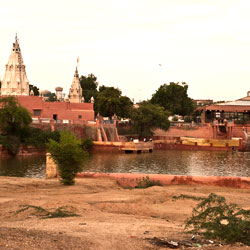
About The Kolayatji (50 Kms) Temple The Kolayatji Temple, located 50 kilometers from Bikaner in the Indian state of Rajasthan, is a significant Hindu pilgrimage site dedicated to Lord Vishnu. The temple complex is situated near the Kolayat Lake, which adds to the serene and spiritual atmosphere of the place. It is believed that taking a dip in the sacred waters of the lake can cleanse one's sins and bring blessings. Architecture Of Kolayatji (50 Kms) Temple The architecture of the Kolayatji Temple is a fine example of traditional Rajasthani craftsmanship. The temple complex is built in a typical Rajasthani style with intricate carvings, beautiful frescoes, and stunning architectural details. The main temple is adorned with colorful paintings and sculptures of Hindu deities, creating a visually stunning setting for devotees and visitors. History The history of the Kolayatji Temple dates back centuries, with mentions of the temple in ancient scriptures and texts. It is believed that the temple was built by King Vikramaditya in honor of Lord Vishnu and has since been an important pilgrimage site for devotees from all over the country. The temple has stood the test of time and continues to draw pilgrims seeking blessings and spiritual solace. Best Time To Visit The best time to visit the Kolayatji Temple is during the winter months from October to March when the weather in Rajasthan is pleasant and conducive for sightseeing and temple visits. The annual Kolayat Fair, held during the months of October and November, is a great time to visit the temple as it is bustling with activity and festivities. However, the temple is open to visitors throughout the year, so one can plan a visit according to their convenience. How To Reach The Kolayatji Temple is located around 50 kilometers from Bikaner in Rajasthan and is easily accessible by road. Visitors can hire a taxi or take a bus from Bikaner to reach the temple. The nearest railway station is in Bikaner, which is well-connected to major cities in Rajasthan and other parts of the country. If arriving by air, the nearest airport is in Jodhpur, around 250 kilometers away, from where one can take a taxi or bus to reach the temple. Significance Of The Kolayatji (50 Kms) Temple The Kolayatji Temple holds immense significance for devotees of Lord Vishnu and is believed to be a place where one can seek blessings, fulfill wishes, and find inner peace. The temple complex is not only a religious site but also a cultural and historical landmark in Rajasthan. Pilgrims visit the temple to offer prayers, perform rituals, and participate in festivals to seek the blessings of the deity. The serene surroundings of the temple and the holy Kolayat Lake make it a tranquil and spiritual destination for those seeking a divine experience.
Explore More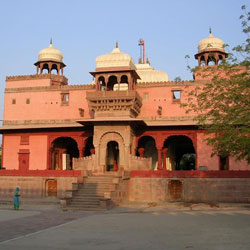
About The Shiv Bari Temple in Bikaner The Shiv Bari Temple, located in the city of Bikaner in the Indian state of Rajasthan, is a popular Hindu temple dedicated to Lord Shiva. It is one of the most revered temples in the region and attracts devotees and tourists from far and wide. The temple is known for its architectural beauty, historical significance, and religious importance. Architecture Of Shiv Bari Temple The Shiv Bari Temple is a fine example of Rajputana architecture, with intricate carvings, beautiful sculptures, and delicate designs adorning its walls and ceilings. The temple complex is built in a traditional Rajasthani style, with a grand entrance gate leading to a central courtyard where the main shrine of Lord Shiva is located. The temple's spire, or shikara, is a prominent feature of its architecture and is adorned with colorful frescoes and ornate carvings. History The Shiv Bari Temple was built by Maharaja Doongar Singh of Bikaner in the late 19th century. The temple is believed to have been constructed to honor the memory of the king's father, Maharaja Lal Singh, who was a staunch devotee of Lord Shiva. The temple has since been a place of worship and pilgrimage for the people of Bikaner and has played a significant role in the religious and cultural life of the city. Best Time To Visit The best time to visit the Shiv Bari Temple is during the winter months, from October to March, when the weather is pleasant and conducive for sightseeing and exploring the temple complex. The temple is also illuminated during the evening hours, creating a magical and serene atmosphere for visitors to experience. It is advisable to avoid visiting the temple during the summer months, as the scorching heat can make it uncomfortable for sightseeing. How To Reach The Shiv Bari Temple is located in the heart of Bikaner city and is easily accessible by road. Bikaner is well-connected to major cities in Rajasthan and other parts of India by a network of roads, railways, and airways. The nearest railway station to the temple is Bikaner Junction, which is just a short drive away. The nearest airport is Jodhpur Airport, which is located approximately 250 kilometers from Bikaner. Significance Of The Shiv Bari Temple The Shiv Bari Temple holds great religious significance for the people of Bikaner and is considered a sacred place of worship for devotees of Lord Shiva. The temple is known for its spiritual atmosphere, where devotees can offer prayers, perform rituals, and seek blessings from the divine. The temple also hosts various religious festivals and events throughout the year, attracting a large number of pilgrims and tourists.
Explore More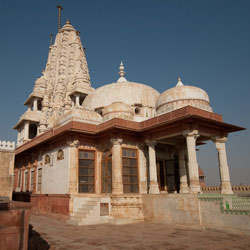
About The Shri Laxminath Temple The Shri Laxminath Temple is a revered Hindu temple located in the heart of Bikaner, Rajasthan. It is dedicated to Lord Vishnu and Goddess Laxmi, making it a significant place of worship for devotees. The temple's intricate architecture and historical importance make it a must-visit attraction for locals and tourists alike. Architecture Of Shri Laxminath Temple The Shri Laxminath Temple showcases stunning Rajasthani architecture with its intricately carved pillars, ornate ceilings, and beautiful marble statues. The temple is adorned with colorful frescoes and delicate mirror work, adding to its grandeur. The main sanctum sanctorum houses the idols of Lord Vishnu and Goddess Laxmi, exuding a divine aura that mesmerizes visitors. History The Shri Laxminath Temple has a rich history that dates back several centuries. It was built by Maharaja Rao Lunkaran in the early 19th century as a place of worship for the royal family and the people of Bikaner. The temple has withstood the test of time and remains an important religious site in the region, attracting devotees from far and wide. Best Time To Visit The Shri Laxminath Temple can be visited throughout the year, but the best time to experience its beauty is during the winter months from October to March. The weather is pleasant during this time, making it comfortable for visitors to explore the temple and its surroundings. The temple also hosts various festivals and religious ceremonies during this period, adding to the vibrant atmosphere. How To Reach The Shri Laxminath Temple is located in the heart of Bikaner city, making it easily accessible by road. Visitors can reach the temple by hiring a taxi or taking a local bus from the Bikaner bus stand. The nearest railway station is Bikaner Junction, which is well-connected to major cities in Rajasthan and other parts of India. The nearest airport is Civil Airport Bikaner, which is around 17 kilometers away from the temple. Significance Of The Shri Laxminath Temple The Shri Laxminath Temple holds immense religious significance for Hindus, as it is dedicated to Lord Vishnu, the preserver of the universe, and Goddess Laxmi, the goddess of wealth and prosperity. Devotees visit the temple to seek blessings for success, happiness, and well-being. The temple's serene atmosphere and spiritual vibes create a sense of peace and tranquility, making it a sacred space for introspection and meditation.
Explore More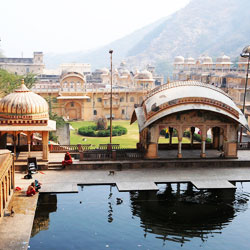
About The Galta-Temple in Jaipur The Galta Temple, also known as the Galta Ji Temple or the Monkey Temple, is a renowned Hindu pilgrimage site located in Jaipur, Rajasthan. Situated amidst the picturesque Aravalli hills, this temple complex comprises several temples, pavilions, and holy kunds (water tanks). The temple is dedicated to the Sun God and is visited by devotees and tourists alike for its spiritual significance and stunning architecture. Architecture of Galta-Temple The Galta Temple showcases a blend of Rajput and Mughal architectural styles, making it a unique and visually appealing attraction. The temple complex features intricately carved pillars, colorful frescoes, and ornate domes that add to its grandeur. The main temple is built using pink sandstone and marble, reflecting the traditional architectural elements of Rajasthan. The temple's courtyards, surrounded by lush greenery and natural springs, create a serene and tranquil ambiance for visitors. History The history of the Galta-Temple dates back to the 18th century when it was constructed by Diwan Rao Kriparam, a courtier of the royal family of Jaipur. The temple complex was further developed and expanded by the Kachwaha Rajput rulers, who held the site in high regard for its religious significance. Over the years, the Galta-Temple has become a revered pilgrimage site for Hindus, attracting devotees from far and wide. Best Time To Visit The best time to visit the Galta-Temple is during the winter months of October to March when the weather is pleasant and conducive for exploring the temple complex. The cooler temperatures make it easier to navigate the hilly terrain surrounding the temple and enjoy the natural beauty of the surroundings. Visitors can also witness colorful festivals and religious ceremonies that take place at the temple during this time, adding to the cultural experience. How To Reach The Galta-Temple is located approximately 10 kilometers from the city center of Jaipur and can be easily reached by car, taxi, or local transport. Visitors can hire a cab or take a public bus from Jaipur to reach the temple complex. The journey to the temple offers scenic views of the Aravalli hills, making it a memorable experience for travelers. Once at the temple, visitors can explore the various temples, kunds, and gardens at their own pace. Significance Of The Galta-Temple The Galta-Temple holds significant religious importance for Hindus, particularly followers of the Sun God. The temple complex is believed to be a sacred place where devotees can worship and seek blessings for prosperity and well-being. The natural springs and kunds within the temple complex are considered holy and are used for ritual bathing and purification ceremonies. The presence of monkeys in and around the temple is also considered auspicious and adds to the charm of the site.
Explore More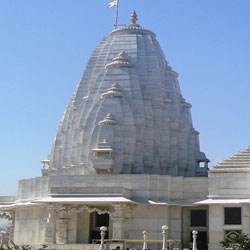
About The Birla Mandir Temple The Birla Mandir Temple, also known as the Laxmi Narayan Temple, is a stunning Hindu temple located in Jaipur, the capital city of Rajasthan, India. This beautiful temple is dedicated to Lord Vishnu (Narayan) and Goddess Lakshmi, who are worshipped by devotees seeking peace, prosperity, and happiness in their lives. Architecture Of Birla Mandir Temple The Birla Mandir Temple is known for its exquisite architectural design and intricate carvings. Built entirely of white marble, the temple exudes a sense of serenity and grandeur. The main shrine is adorned with beautiful sculptures depicting various scenes from Hindu mythology, while the walls are decorated with intricate patterns and motifs. The temple's three domes represent the three different approaches to religion – knowledge, action, and devotion. History The Birla Mandir Temple was built by the Birla family, a prominent industrialist family in India, in 1988. The temple was constructed to honor Lord Vishnu and Goddess Lakshmi and to promote the values of peace, harmony, and spirituality among the masses. Since its inauguration, the temple has been a popular place of worship for locals and tourists alike. Best Time To Visit The best time to visit the Birla Mandir Temple is during the early morning or evening hours when the temple is less crowded, and the weather is relatively pleasant. Visiting the temple during festivals such as Diwali and Janmashtami is also a great experience as the temple is beautifully decorated and the atmosphere is filled with devotion and prayers. How To Reach The Birla Mandir Temple is located in the heart of Jaipur city and is easily accessible by road. Visitors can hire a taxi or auto-rickshaw to reach the temple from any part of the city. The nearest railway station is Jaipur Junction, which is about 5 km away from the temple, while the nearest airport is Jaipur International Airport, which is about 12 km away. Significance Of The Birla Mandir Temple The Birla Mandir Temple holds great significance for devotees who seek blessings from Lord Vishnu and Goddess Lakshmi for wealth, happiness, and prosperity. The temple's serene ambiance and peaceful surroundings make it an ideal place for meditation and spiritual contemplation. The temple also hosts various cultural and religious events throughout the year, attracting a large number of visitors.
Explore More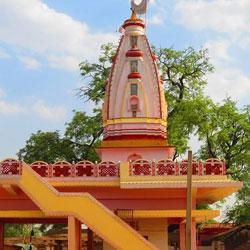
Shri 1008 Shri Bhomiya Ji Maharaj Mandir
About The Shri 1008 Shri Bhomiya Ji Maharaj Mandir Temple The Shri 1008 Shri Bhomiya Ji Maharaj Mandir Temple, located in Jaipur, Rajasthan, is a popular Hindu temple dedicated to Bhomiya Ji Maharaj. It is a sacred place of worship for devotees who come to seek blessings and offer their prayers to the deity. The temple is known for its spiritual ambiance and architectural beauty, making it a must-visit destination for tourists and pilgrims alike. Architecture Of Shri 1008 Shri Bhomiya Ji Maharaj Mandir Temple The architecture of the Shri 1008 Shri Bhomiya Ji Maharaj Mandir Temple is a fine example of traditional Rajasthani style. The temple features intricate carvings, vibrant colors, and stunning patterns that highlight the rich cultural heritage of the region. The sanctum sanctorum of the temple houses the idol of Bhomiya Ji Maharaj, adorned with flowers and incense, creating a serene atmosphere for devotees to offer their prayers. History The history of the Shri 1008 Shri Bhomiya Ji Maharaj Mandir Temple dates back several centuries. According to local legends, Bhomiya Ji Maharaj was a revered saint who lived in the region and performed miracles to help the people in need. Over time, a temple was built in his honor to commemorate his divine presence and to serve as a spiritual center for the community. Today, the temple stands as a symbol of faith and devotion, attracting devotees from far and wide. Best Time To Visit The best time to visit the Shri 1008 Shri Bhomiya Ji Maharaj Mandir Temple is during the winter months, from October to March, when the weather is pleasant and conducive for sightseeing. Devotees can participate in various religious ceremonies and festivals that take place at the temple during this time, adding to the spiritual experience. It is advisable to check the temple's schedule for any special events or rituals that may be happening during your visit. How To Reach The Shri 1008 Shri Bhomiya Ji Maharaj Mandir Temple is easily accessible by road, located in the outskirts of Jaipur city. Visitors can hire a taxi or take a local bus to reach the temple complex. The nearest airport is Jaipur International Airport, which is well-connected to major cities in India. For those traveling by train, Jaipur Railway Station is the closest railhead, with regular trains running to and from various parts of the country. Significance Of The Shri 1008 Shri Bhomiya Ji Maharaj Mandir Temple The Shri 1008 Shri Bhomiya Ji Maharaj Mandir Temple holds great significance for devotees who believe in the divine powers of Bhomiya Ji Maharaj. It is a place where prayers are answered, wishes are fulfilled, and blessings are sought for prosperity and well-being. The temple serves as a spiritual retreat for those seeking solace and guidance in times of need, making it a revered place of worship in the hearts of the faithful. Visitors to the temple can witness the devotion and faith of the devotees, experience the soothing chants and hymns, and immerse themselves in the divine aura of Bhomiya Ji Maharaj.
Explore More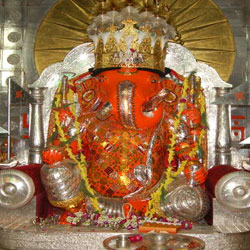
About The Moti Doongri Temple The Moti Doongri Temple, located in Jaipur, Rajasthan, is a popular Hindu shrine dedicated to Lord Ganesha. The temple is situated on a small hill called Moti Doongri, which translates to "Pearl Hill" in English. This temple is an important religious and cultural landmark in Jaipur and attracts devotees and tourists alike. The temple is known for its intricate architecture, serene ambiance, and religious significance. Architecture Of Moti Doongri Temple The architecture of the Moti Doongri Temple is a beautiful blend of Rajasthani and South Indian styles. The temple is adorned with intricate carvings, colorful paintings, and domes that add to its grandeur. The main sanctum of the temple houses the idol of Lord Ganesha, beautifully decorated with flowers and ornaments. The temple complex also includes smaller shrines dedicated to other Hindu deities, as well as a peaceful garden where visitors can sit and meditate. History The history of the Moti Doongri Temple dates back to the early 18th century when it was built by Seth Jai Ram Paliwal, a wealthy businessman from Jaipur. The temple was constructed as a tribute to Lord Ganesha, the remover of obstacles, and has since become a place of worship and pilgrimage for devotees from all over the country. Over the years, the temple has undergone renovations and additions, but its original charm and spiritual significance have been preserved. Best Time To Visit The best time to visit the Moti Doongri Temple is during the annual festival of Ganesh Chaturthi, which falls in the Hindu month of Bhadrapada (August-September). During this time, the temple is decorated with lights, flowers, and colorful decorations, and devotees gather to offer prayers and seek the blessings of Lord Ganesha. Apart from the festival, the temple is open to visitors throughout the year, and any time is a good time to experience the spirituality and tranquility of this sacred place. How To Reach The Moti Doongri Temple is located in the heart of Jaipur city and is easily accessible by road. The nearest bus stand is the Moti Doongri bus stand, from where visitors can take a short walk to reach the temple. Alternatively, taxis and auto-rickshaws are also available for hire to reach the temple. The nearest railway station is Jaipur Junction, which is well-connected to major cities in India. For those traveling by air, the Jaipur International Airport is the nearest airport to reach the temple. Significance Of The Moti Doongri Temple The Moti Doongri Temple holds great significance for the people of Jaipur and devotees of Lord Ganesha. It is believed that visiting the temple and offering prayers to Lord Ganesha can help in overcoming obstacles and achieving success in life. The temple is also a popular site for newlyweds to seek blessings for a happy and prosperous married life. The spiritual ambiance and positive energy of the temple make it a peaceful retreat for those seeking solace and divine intervention in their lives.
Explore More
About The Monkey Temple The Monkey Temple gets its name from the large population of monkeys that inhabit the temple complex. These playful and mischievous creatures can be seen running and jumping around the temple grounds, adding to the temple's charm. The temple complex consists of several shrines, pavilions, and holy water tanks, all nestled amidst the picturesque Aravalli Hills. Architecture of The Monkey Temple The architecture of the Monkey Temple is a beautiful blend of Hindu and Mughal styles, showcasing intricate carvings, domes, and arches. The temple complex is known for its stunning views of Jaipur city and the surrounding countryside. The main temple, dedicated to Lord Hanuman, features a series of steps that lead up to the entrance, where devotees can offer prayers and seek blessings. History The Monkey Temple has a rich history dating back to the 18th century. It is believed that the temple was built by Diwan Rao Kriparam, a courtier of the ruler of Jaipur, Maharaja Sawai Jai Singh II. The temple has since been renovated and expanded over the centuries, yet it has managed to retain its original charm and spiritual significance. Best Time To Visit The best time to visit the Monkey Temple is during the winter months, from October to March when the weather is pleasant and ideal for exploring the temple complex. It is recommended to visit the temple early in the morning or late in the evening to avoid the scorching midday sun. The annual Monkey Temple Fair, held during the Hindu festival of Makar Sankranti, is also a great time to experience the vibrant atmosphere and cultural festivities at the temple. How To Reach The Monkey Temple is located approximately 10 kilometers from Jaipur city center and can be easily reached by car or auto-rickshaw. Visitors can also opt for a guided tour or hire a taxi to explore the temple complex and learn about its history and significance. The nearest airport is Jaipur International Airport, which is well-connected to major cities in India. Significance Of The Monkey Temple The Monkey Temple holds great religious significance for Hindus, who believe that worshiping Lord Hanuman at this sacred site can bring blessings and protection. The temple is also a popular spot for photographers and nature lovers, who come to capture the stunning views and observe the antics of the resident monkeys. The tranquil atmosphere and spiritual energy of the temple make it a peaceful retreat from the hustle and bustle of city life.
Explore More
About The Tanot Rai Mata Mandir Temple The Tanot Rai Mata Mandir Temple is a popular Hindu temple located in the town of Tanot in the district of Jaisalmer, Rajasthan. This temple is dedicated to Goddess Tanot Rai, who is believed to be a form of Goddess Hinglaj Mata. The temple holds immense significance among the locals as well as tourists who visit the region. It is known for its spiritual aura and its historical importance. Architecture of Tanot Rai Mata Mandir Temple The architecture of Tanot Rai Mata Mandir Temple is a fine example of traditional Rajasthani temple architecture. The temple complex is surrounded by high walls and has a large courtyard where devotees can gather for prayers and ceremonies. The main shrine of the temple is adorned with intricate carvings and sculptures that depict various mythological stories and symbols. The temple also has a sanctum sanctorum where the idol of Goddess Tanot Rai is placed for worship. History The history of Tanot Rai Mata Mandir Temple dates back to the time of the Indo-Pakistani War of 1965. During the war, the temple miraculously survived several bombings that were carried out by the Pakistani forces. It is believed that the bombs dropped by the enemy forces failed to explode and the temple remained unscathed. This incident is considered as a miracle by the locals and is often cited as a testament to the divine protection of Goddess Tanot Rai. Since then, the temple has gained immense popularity and has become a symbol of faith and resilience. Best Time To Visit The best time to visit the Tanot Rai Mata Mandir Temple is during the winter months from October to March. The weather during this time is pleasant and suitable for exploring the temple complex. Devotees can also participate in various festivals and ceremonies that are organized at the temple during this period. It is advisable to avoid visiting the temple during the summer months as the temperature can rise significantly and make it uncomfortable for visitors. How To Reach The Tanot Rai Mata Mandir Temple is located in the town of Tanot, which is well-connected by road to the city of Jaisalmer. Visitors can hire a taxi or take a bus from Jaisalmer to reach the temple. The nearest railway station is located in Jaisalmer, which is approximately 120 kilometers away from Tanot. The nearest airport is in Jodhpur, which is around 325 kilometers from the temple. From the airport or railway station, visitors can hire a taxi or take a bus to reach the Tanot Rai Mata Mandir Temple. Significance of The Tanot Rai Mata Mandir Temple The Tanot Rai Mata Mandir Temple holds immense significance for the locals as well as for the Indian Army. It is believed that the temple offers divine protection to the soldiers who guard the borders of India. The temple is also considered as a symbol of faith and devotion among the devotees who visit it seeking blessings from Goddess Tanot Rai. The temple is a popular pilgrimage site and attracts thousands of devotees every year who come to offer prayers and seek the blessings of the goddess.
Explore More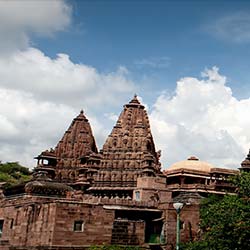
About The Mahamandir Temple The Mahamandir Temple is a magnificent Hindu temple located in Jodhpur, Rajasthan. This temple is dedicated to Lord Shiva and is renowned for its stunning architecture and intricate carvings. The temple is a popular pilgrimage site for devotees and tourists alike, attracting visitors from all over the world. Architecture Of Mahamandir Temple The Mahamandir Temple is an architectural marvel with its high shikharas, or spires, that reach towards the sky. The temple is built in the traditional Rajasthani style, with intricate carvings and designs adorning its walls and pillars. The temple is made entirely of red sandstone, giving it a striking and vibrant appearance. The interior of the temple is equally impressive, with beautifully crafted statues of deities and intricate designs on the ceilings and walls. History The Mahamandir Temple was built in the 18th century by Maharaja Umaid Singh of Jodhpur. The temple took several years to complete, but its stunning architecture and design have made it one of the most iconic temples in Rajasthan. The temple has stood the test of time and remains an important religious site for followers of Hinduism. Best Time To Visit The best time to visit the Mahamandir Temple is during the winter months from October to March. The weather during this time is pleasant and ideal for exploring the temple and its surroundings. Additionally, many festivals and religious events take place at the temple during this time, making it a lively and vibrant place to visit. How To Reach The Mahamandir Temple is located in Jodhpur, Rajasthan, making it easily accessible by road, rail, and air. The nearest airport is the Jodhpur Airport, which is well-connected to major cities in India. The temple is also easily accessible by road, with regular bus services running to and from Jodhpur. Additionally, the Jodhpur Railway Station is a major railway hub, with trains connecting the city to various parts of the country. Significance Of The Mahamandir Temple The Mahamandir Temple holds great significance for followers of Hinduism, as it is dedicated to Lord Shiva, one of the principal deities in Hindu mythology. Devotees visit the temple to seek blessings and offer prayers to Lord Shiva. The temple is also known for its spiritual and peaceful ambiance, making it a popular destination for meditation and reflection.
Explore MoreRoyal Rajasthan Tour - 7 Days
7 Days/ 6 Night
Bikaner - Jaipur - Jaisalmer - Jodhpur
3D - 2N Jaipur Tour Package
3 Days/ 2 Night
Jaipur
The Golden Triangle - 5 Nights 6 Days
6 Days/ 5 Night
Agra - Jaipur - New Delhi
4 Nights 5 Days Hills - Lakes Udaipur - Mount Abu Tour
5 Days/ 4 Night
Mount Abu - Udaipur
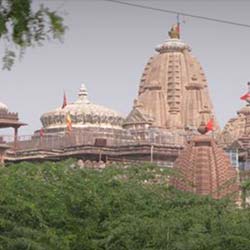
About The Sachiya Mata Temple in Jodhpur The Sachiya Mata Temple, located in Osian village near Jodhpur, Rajasthan, is a renowned pilgrimage site dedicated to Goddess Sachiya. This ancient temple holds tremendous religious and historical significance, attracting devotees and tourists alike. The temple's captivating architecture, rich history, and peaceful ambiance make it a must-visit destination for those seeking spiritual solace and cultural enlightenment. Architecture Of Sachiya Mata Temple The Sachiya Mata Temple showcases exquisite Rajasthani architectural styles with intricate carvings, ornate pillars, and beautifully adorned ceilings. The temple's main sanctum is adorned with colorful frescoes depicting various mythological tales, adding to its grandeur and charm. The structure is built using sandstone and marble, enhancing its visual appeal and architectural precision. The temple complex also includes smaller shrines dedicated to other deities, making it a comprehensive religious site for devotees. History The history of the Sachiya Mata Temple dates back to ancient times, with legends and folklore surrounding its establishment. It is believed that the temple was constructed by Parmar King Upendre in the 8th century in honor of Goddess Sachiya, the wife of Lord Indra. Over the centuries, the temple underwent renovations and additions, reflecting various architectural influences and historical events. The temple's legacy is deeply rooted in the cultural fabric of Rajasthan, making it a symbol of devotion and faith for generations of devotees. Best Time To Visit The best time to visit the Sachiya Mata Temple is during the festive season of Navratri, which falls in September and October. During this time, the temple is adorned with colorful decorations, and special prayers and rituals are conducted to honor the goddess. The vibrant atmosphere, cultural performances, and religious fervor make Navratri a truly enchanting time to experience the temple's spiritual energy. However, visitors can also explore the temple throughout the year and witness its serene beauty and architectural splendor. How To Reach The Sachiya Mata Temple is located in Osian village, approximately 65 kilometers from Jodhpur city in Rajasthan. Visitors can easily reach the temple by road via private vehicles or public transport options such as buses or taxis. The nearest airport to the temple is in Jodhpur, making it convenient for domestic and international tourists to access the site. Additionally, local tour operators and guides offer guided tours to the temple, providing a hassle-free travel experience for visitors. Significance Of The Sachiya Mata Temple The Sachiya Mata Temple holds immense significance for devotees who worship Goddess Sachiya as the divine mother and protector. The temple is a sacred place where devotees seek blessings for prosperity, health, and well-being. The goddess is believed to fulfill the wishes of her devotees and shower them with divine grace and blessings. The temple's serene ambiance and spiritual vibrations create a peaceful retreat for those seeking solace and inner harmony. Overall, the Sachiya Mata Temple is a revered pilgrimage site that embodies the rich cultural and religious heritage of Rajasthan.
Explore More
About The Mahamandaleshwar Mahadev Temple in Jodhpur The Mahamandaleshwar Mahadev Temple is a prominent Hindu temple located in the city of Jodhpur in the state of Rajasthan, India. Dedicated to Lord Shiva, this temple holds great religious significance for the locals as well as tourists who visit the city. The temple is known for its unique architecture, historical importance, and spiritual ambiance. Architecture Of Mahamandaleshwar Mahadev Temple The Mahamandaleshwar Mahadev Temple showcases a combination of intricate Rajput and Mughal architectural styles. The temple's main entrance is grand and ornate, with intricate carvings and detailed designs. The inner sanctum of the temple houses a large idol of Lord Shiva, adorned with jewels and flowers. The temple complex also features several smaller shrines dedicated to other Hindu deities, as well as a spacious courtyard for devotees to gather and pray. The temple's exterior is adorned with beautiful marble sculptures and intricate stone carvings, depicting various mythological scenes and religious motifs. The overall design of the temple is a testament to the skilled craftsmanship of the artisans who built it, showcasing a blend of traditional and contemporary architectural elements. History The Mahamandaleshwar Mahadev Temple has a rich history that dates back several centuries. According to local legends, the temple was constructed by a Rajput king as a token of gratitude to Lord Shiva for granting him victory in a battle. Over the years, the temple has undergone several renovations and expansions, each adding to its grandeur and magnificence. The temple has played a significant role in the religious and cultural life of the city, serving as a place of worship, meditation, and spiritual solace for devotees from all walks of life. The temple's historical significance and architectural beauty continue to attract visitors from far and wide, making it a must-visit destination in Jodhpur. Best Time To Visit The best time to visit the Mahamandaleshwar Mahadev Temple in Jodhpur is during the winter months, from October to March. The weather during this time is pleasant and ideal for exploring the temple complex and enjoying the spiritual ambiance. The temple sees a higher influx of visitors during festivals like Maha Shivaratri when devotees throng to seek the blessings of Lord Shiva. How To Reach The Mahamandaleshwar Mahadev Temple is easily accessible from the Jodhpur city center. Visitors can reach the temple by hiring a taxi, auto-rickshaw, or taking a local bus. The temple is located at a short distance from the main attractions in Jodhpur, making it a convenient stop for tourists exploring the city. The nearest airport is the Jodhpur Airport, while the Jodhpur Railway Station is the closest railhead to the temple. Significance Of The Mahamandaleshwar Mahadev Temple The Mahamandaleshwar Mahadev Temple holds immense religious significance for Hindus, as it is dedicated to Lord Shiva, one of the principal deities in the Hindu pantheon. Devotees visit the temple to seek the blessings of Lord Shiva for prosperity, peace, and fulfillment of their wishes. The temple's serene atmosphere and sacred surroundings make it an ideal place for meditation and spiritual contemplation.
Explore More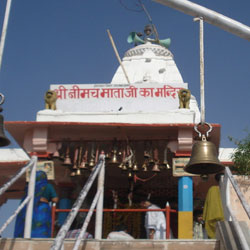
About The Neemach Mata Temple in Udaipur The Neemach Mata Temple is a popular Hindu temple located on a hillock in the city of Udaipur, Rajasthan. Dedicated to Goddess Neemach Mata, the temple is a significant religious site for the locals as well as tourists visiting Udaipur. The temple offers breathtaking views of the city and the surrounding hills, making it a must-visit destination for spiritual seekers and nature lovers alike. Architecture Of Neemach Mata Temple The Neemach Mata Temple boasts beautiful architecture that reflects the traditional Rajasthani style. The temple is adorned with intricate carvings, vibrant colors, and ornate designs that are a treat for the eyes. The temple complex also includes a spacious courtyard, a sacred shrine, and a majestic entrance gate that adds to its grandeur. History The history of the Neemach Mata Temple dates back to ancient times when the temple was built to honor Goddess Neemach Mata, who is believed to be the protector of the city of Udaipur. Legends say that the temple was constructed by Maharana Raj Singh in the 16th century to seek the blessings of the goddess for the well-being of his kingdom. Since then, the temple has been a place of worship and pilgrimage for devotees from far and wide. Best Time To Visit The best time to visit the Neemach Mata Temple is during the early morning or evening hours when the weather is pleasant and the temple is less crowded. The temple offers a serene and peaceful atmosphere during these times, allowing visitors to admire the beauty of the temple and enjoy the panoramic views of Udaipur city. How To Reach The Neemach Mata Temple is situated on a hill in Udaipur, making it accessible by road. Visitors can reach the temple by taking a taxi or hiring a local auto-rickshaw from any part of the city. The temple is located around 8 kilometers from the city center and offers a scenic drive through the picturesque surroundings of Udaipur. Significance Of The Neemach Mata Temple The Neemach Mata Temple holds great significance for the people of Udaipur as it is believed to be a place where wishes are fulfilled and prayers are answered by the goddess. Devotees visit the temple to seek blessings for prosperity, success, and protection from evil forces. The temple is also known for its spiritual aura and positive vibes that attract visitors seeking peace and harmony in their lives.
Explore More
About The Neelkanth Temple The Neelkanth Temple is a stunning piece of architecture located in the city of Alwar in the Indian state of Rajasthan. This temple is dedicated to Lord Shiva and is one of the most popular religious sites in the region. The temple is known for its beautiful architecture, intricate carvings, and serene ambiance that attracts pilgrims and tourists alike. Architecture Of Neelkanth Temple The Neelkanth Temple is a perfect example of Rajasthani architecture. The temple is built using white marble and features intricate carvings and sculptures that depict various mythological stories and characters. The main sanctum of the temple houses a Shiva Lingam, which is worshipped by devotees. The temple also has a beautiful courtyard and a stunning entrance gate that adds to its charm. History The Neelkanth Temple is believed to have been constructed in the 18th century by the Maharaja of Alwar. The temple has gone through several renovations and restorations over the years, but its original beauty and grandeur have been preserved. The temple holds great religious and historical significance for the people of Alwar and is considered a sacred place of worship. Best Time To Visit The best time to visit the Neelkanth Temple is during the months of October to March when the weather is pleasant and suitable for sightseeing. The temple also hosts various festivals and events during this time, which attract a large number of devotees and tourists. It is advisable to avoid visiting the temple during the summer months as the weather can be extremely hot and uncomfortable. How To Reach The Neelkanth Temple is located in the city of Alwar, which is well-connected by road, rail, and air. The nearest airport to Alwar is in Jaipur, which is around 160 kilometers away. The city also has a railway station that is well-connected to major cities like Delhi, Jaipur, and Agra. Visitors can also reach Alwar by road as the city is well-connected by a network of highways. Significance Of The Neelkanth Temple The Neelkanth Temple holds great religious significance for the people of Alwar and is considered a sacred place of worship. The temple is dedicated to Lord Shiva, who is believed to be the destroyer of evil and the giver of peace and prosperity. Devotees visit the temple to seek blessings and offer prayers to the deity. The serene ambiance and spiritual energy of the temple make it a popular destination for pilgrims and tourists alike.
Explore More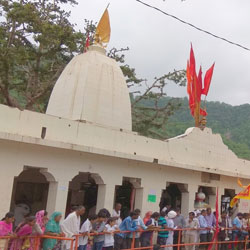
About The Narayani Mata Temple The Narayani Mata Temple is believed to have been built in the 18th century by the Maharaja Balwant Singh of Alwar. The temple is dedicated to Goddess Narayani, a form of Goddess Durga. The temple is built in a traditional Rajasthani style and is adorned with intricate carvings, beautiful sculptures, and colorful paintings. The temple complex also includes a sacred pond, where devotees can take a dip before entering the temple. The serene surroundings and the peaceful atmosphere make it a perfect place for meditation and spiritual reflection. Architecture Of Narayani Mata Temple The architecture of the Narayani Mata Temple is a blend of Rajput and Mughal styles. The main temple is built using white marble, with intricate carvings and sculptures adorning the walls and pillars. The temple's dome is decorated with colorful glasswork, adding to its beauty. The temple complex also includes a Mandap (assembly hall) where religious ceremonies and rituals are conducted. The Mandap is supported by beautifully carved pillars, with a ceiling adorned with intricate designs. The temple's architecture is a perfect example of the rich cultural heritage of Rajasthan. History The history of the Narayani Mata Temple dates back to the 18th century when Maharaja Balwant Singh of Alwar built the temple to honor Goddess Narayani. The temple has since been a place of worship and pilgrimage for devotees from all over the country. Over the years, the temple has undergone several renovations and expansions, but its original charm and beauty have been preserved. The temple is also associated with several legends and folklore, adding to its historical significance. The temple's history is a testament to the rich religious and cultural heritage of Rajasthan. Best Time To Visit The best time to visit the Narayani Mata Temple is during the festival of Navratri, which is celebrated with great fervor and devotion. During Navratri, the temple is decorated with lights, flowers, and colorful decorations. Devotees from far and wide visit the temple to seek the blessings of Goddess Narayani. Apart from Navratri, the temple is also a popular destination during the winter months when the weather is mild and pleasant. The temple's serene surroundings and peaceful atmosphere make it an ideal place for spiritual rejuvenation. How To Reach The Narayani Mata Temple is located in Alwar, Rajasthan, and is easily accessible by road. The nearest airport is in Jaipur, which is approximately 150 kilometers away from Alwar. From Jaipur, one can hire a taxi or take a bus to reach the temple. The nearest railway station is in Alwar, which is well-connected to major cities in Rajasthan and other parts of the country. From the railway station, one can hire a taxi or take a local bus to reach the temple. Significance Of The Narayani Mata Temple The Narayani Mata Temple holds immense religious significance for devotees of Goddess Narayani. The temple is believed to fulfill the wishes of the devotees who visit with a pure heart and devotion. The temple is also known for its healing powers and is said to bring peace and prosperity to those who seek the blessings of the Goddess. The temple is also a popular tourist destination, attracting visitors with its architectural beauty and historical importance. The serene surroundings, peaceful atmosphere, and religious significance make the Narayani Mata Temple a must-visit destination for those seeking spiritual solace and divine blessings.
Explore More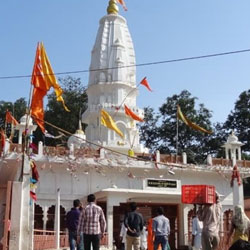
There are plenty of tourist spots in Alwar, Rajasthan that beguile the wayfarers from all over the globe. The wide variety of attractions in this royal land makes it one of the preferred tourist destinations in India. It is frequently visited by global tourists. The plentiful attractions serve the taste of all visitors. Special features of this place are • Historical sites, • Bubbly wildlife, • Scenic landscape, • Rustic essence, • Rainbow-colored culture, • Values tradition, • Sea of the golden desert, etc. All of them present Alwar as one suitable tourist corner in the country. One of the most visited tourist spots in Alwar is the Bhartrihari temple. About Bhartrihari Temple Alwar Bhartihari temple is Located around 30km away from the city and close to the well-known Sariska National Park. This temple is one of the most prevalent sanctified spots in Alwar and is named after Bhartrihari Baba (ruler of Ujjain). Hence, it holds great historical importance. The temple is constructed in customary Rajasthani style with wide corridors, floral designed pillars of shikharas and mandaps. Things to do around Bhartrihari temple • Jungle safari at Sariska tiger reserve • Shopping for kagzi pottery • Tasting delectable food in kalakand market • Trekking in Alwar • Shopping in Alwar History of Bhartrihari temple According to the folklore, Bhartrihari Baba left his empire and became a saint. After so many years, he returned to his wife and requested her for Bhiksha (or something to eat). The queen gave him a fruit that he had it and turned immortal. Devotees have faith in that Baba was sanctified with some saintly powers. Another story says, Raja Bharthari while returning from hunting saw a woman surrendering her life by jumping into her husband’s fire. Maharaja Bharthari got captivated and wanted to test his wife’s devotion as well. So, next time he went to the jungle for hunting, a messenger carried back news of his death to Rani Pingala. She expired on hearing the news itself. When King Bharthari came to know this, he got devastated. In his grief, he gave up the worldly amenities and became a monk. The king then became a follower of Guru Gorakhnath and meditated here in Rajasthan. He prayed to God for water and his sincerity and dedication were answered by God and stream appeared from rock underneath. Baba Bharthari as he was known later had buried himself live in the place where the temple stands today. The architecture of Bhartrihari Temple in Alwar It is a beautiful temple which is done up in the traditional Rajasthani style of architecture--wide galleries with surrounding porches, floral designed columns of shikharas, mandaps, etc. Best time to visit Bhartrihari temple October to March is, in general, the best time to visit Rajasthan. This tourist spot is good to visit in July that is the rainy season as well. How to reach Alwar? One of the major reasons for Alwar to grow into a top tourist destination is its conveyance system. The enhanced transportation of the city has removed the questions like how to reach Alwar. The place is very well connected to roads and highways. You can take your vehicle to reach the temple. Nearby attractions in Alwar 1. Bala Quila fort 2. Bhangarh Fort 3. Siliserh lake palace 4. Moti dungaree 5. City palace 6. Moosi Rani ki chhatri 7. Vinay Vilas Palace 8. Churi market 9. Sarafa Bazar 10. Kesroli Tips for visiting Bhartrihari temple This place is a happening one and there are so many attractive tourist spots to visit. So if you are visiting this place as a couple, in a group or with family, some tips are here to give. • Plan a proper tour • Check for best travel operators • Explore various deals including fun activities • Sightseeing and touring must be included • Ask for a travel guide A travel guide to this place is a must if you want to know everything clearly and save your time to enjoy other fun activities.
Explore More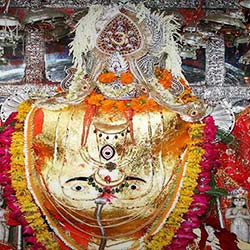
About The Ganesh Trinetra Temple The Ganesh Trinetra Temple is a popular Hindu temple located in Ranthambore, Rajasthan. Dedicated to Lord Ganesha, the temple holds significant religious importance for devotees and visitors alike. The temple is known for its unique trinetra or three-eyed idol of Lord Ganesha, which is believed to be very powerful and grants the wishes of those who worship him with devotion. Architecture Of Ganesh Trinetra Temple The Ganesh Trinetra Temple is a beautiful example of traditional Rajasthani architecture. The temple is adorned with intricate carvings, colorful paintings, and sculptures that depict various stories and legends from Hindu mythology. The main sanctum of the temple houses the trinetra idol of Lord Ganesha, which is worshipped by devotees with great reverence. The temple complex also includes a prayer hall, a holy water tank, and beautifully landscaped gardens that add to the serene ambiance of the place. History The history of the Ganesh Trinetra Temple dates back several centuries. It is believed that the temple was built by a local ruler to seek the blessings of Lord Ganesha for protection and prosperity. Over the years, the temple has undergone several renovations and expansions, but its spiritual essence and significance have remained intact. The temple attracts thousands of pilgrims and tourists every year who come to seek the blessings of the powerful trinetra idol of Lord Ganesha. Best Time To Visit The best time to visit the Ganesh Trinetra Temple is during the festival of Ganesh Chaturthi, which is celebrated with great pomp and show in the temple premises. The festival usually falls in the months of August or September and attracts a large number of devotees from all over the country. The temple is also a popular destination for visitors throughout the year due to its peaceful surroundings and spiritual ambiance. How To Reach The Ganesh Trinetra Temple is located in Ranthambore, which is well-connected by road, rail, and air. The nearest airport is in Jaipur, which is approximately 180 kilometers away from the temple. From Jaipur, one can hire a taxi or take a bus to reach Ranthambore. The nearest railway station is in Sawai Madhopur, which is around 12 kilometers away from the temple. From the railway station, visitors can hire a cab or take a local bus to reach the temple. The temple is also easily accessible by road, and there are regular bus services from nearby cities to Ranthambore. Significance Of The Ganesh Trinetra Temple The Ganesh Trinetra Temple holds immense significance for devotees as it is believed to fulfill the wishes of those who pray to the trinetra idol of Lord Ganesha with devotion and faith. The three eyes of Lord Ganesha symbolize wisdom, knowledge, and protection, and devotees believe that worshipping the trinetra idol can remove obstacles and bring success and happiness in their lives. The temple is also considered a place of spiritual healing and rejuvenation, where visitors can find inner peace and solace in the divine presence of Lord Ganesha. Overall, the Ganesh Trinetra Temple is a must-visit destination for those seeking spiritual upliftment and blessings from the benevolent deity.
Explore More
About The Rangji Temple The Rangji Temple is a popular Hindu temple located in Pushkar, Rajasthan. It is dedicated to Lord Rangji, an incarnation of Lord Vishnu. The temple is a significant religious site for devotees and tourists alike, known for its unique architecture and rich history. Architecture Of Rangji Temple The Rangji Temple is a beautiful blend of South Indian and Rajput architectural styles. The temple's main entrance is adorned with a towering gopuram (gateway tower) typical of South Indian temples, while the inner sanctum and courtyard feature intricate Rajput artwork and carvings. The temple's central shrine houses a majestic idol of Lord Rangji, intricately carved and adorned with jewels. History The Rangji Temple was built in the 18th century by Seth Puran Mal Ganeriwal, a wealthy merchant from Mathura. He was a devotee of Lord Rangji and commissioned the construction of the temple to honor his deity. The temple has since been a place of worship and pilgrimage for followers of Lord Vishnu. Best Time To Visit The best time to visit the Rangji Temple is during the annual Rangji Ka Mela festival, which is held in March or April. During this time, the temple is decorated with colorful lights and flowers, and devotees from all over the country gather to pay their respects to Lord Rangji. The festival is a vibrant celebration of music, dance, and devotion. How To Reach The Rangji Temple is located in the heart of Pushkar, making it easily accessible by road. The nearest railway station is the Ajmer Junction, which is well-connected to major cities like Jaipur and Delhi. From Ajmer, visitors can hire a taxi or take a local bus to reach Pushkar. The temple is a short walk from the main market area of Pushkar. Significance Of The Rangji Temple The Rangji Temple holds great significance for devotees of Lord Vishnu, as it is believed to be one of the oldest temples dedicated to Lord Rangji in India. The temple is also a symbol of the cultural and architectural heritage of Rajasthan, with its unique blend of styles and intricate carvings. Pilgrims visit the temple to seek blessings for prosperity, success, and spiritual fulfillment.
Explore More
About The Atmateshwar Temple The Atmateshwar Temple is nestled amidst the picturesque surroundings of Pushkar, which is famous for its sacred lake and numerous temples. It is believed to be one of the oldest temples in the region, dating back to ancient times. The temple is a peaceful retreat for those seeking solace and spiritual rejuvenation. Visitors can immerse themselves in the tranquil ambiance of the temple and experience a sense of calm and serenity. Architecture Of Atmateshwar Temple The architecture of the Atmateshwar Temple is a blend of traditional Rajasthani style and intricate carvings. The temple is adorned with beautifully crafted pillars, intricate sculptures, and ornate designs that reflect the rich cultural heritage of Rajasthan. The main sanctum sanctorum of the temple houses the sacred Shiva Lingam, which is worshipped by devotees with utmost reverence. The temple complex also includes various smaller shrines dedicated to different deities, adding to the spiritual aura of the place. History The history of the Atmateshwar Temple is shrouded in ancient legends and myths. According to popular belief, the temple was established by a devout sage who was guided by divine intervention to build a shrine in honor of Lord Shiva. Over the centuries, the temple has been renovated and restored, preserving its architectural beauty and spiritual sanctity. The temple has witnessed the rise and fall of dynasties, yet it has stood the test of time as a symbol of faith and devotion. Best Time To Visit The best time to visit the Atmateshwar Temple is during the winter months, from October to March when the weather is pleasant and conducive for sightseeing. The temple sees a large influx of pilgrims and tourists during festivals such as Mahashivratri and Kartik Poornima when special prayers and rituals are conducted with great fervor. The winter season also offers a chance to explore the town of Pushkar and its various attractions in comfort. How To Reach The Atmateshwar Temple is easily accessible by road from the major cities of Rajasthan such as Jaipur and Ajmer. The nearest railway station is at Ajmer, which is well-connected to other parts of the country. Visitors can hire taxis or auto-rickshaws to reach the temple from the railway station or bus stand. The temple is located in the heart of Pushkar town, making it convenient for devotees and tourists to pay their respects. Significance Of The Atmateshwar Temple The Atmateshwar Temple holds immense significance for the devotees of Lord Shiva, who consider it a sacred place for seeking blessings and divine grace. The temple is believed to be a place of spiritual energy and healing, where one can find solace and inner peace. Many visitors come to the temple to offer prayers, perform rituals, and seek guidance in their spiritual journey. The tranquil ambiance of the temple and the soothing chants of the priests create a devotional atmosphere that leaves a lasting impression on the hearts of the devotees.
Explore More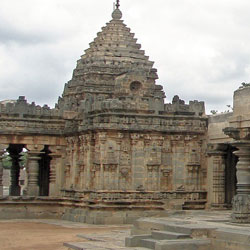
About The Aptaeshwar Temple The Aptaeshwar Temple is a renowned Hindu temple located in the holy town of Pushkar, Rajasthan. This ancient temple is dedicated to Lord Shiva and is considered to be one of the sacred sites in the region. The temple is known for its intricate architecture and religious significance, attracting devotees from near and far. Architecture of Aptaeshwar Temple The Aptaeshwar Temple is an architectural marvel that showcases the rich heritage and craftsmanship of the region. The temple features a unique blend of Rajasthani and Mughal architectural styles, with ornate carvings, domes, and pillars adorning the structure. The temple's main sanctum sanctorum houses the idol of Lord Shiva, surrounded by other deities and religious symbols. History The Aptaeshwar Temple has a long and storied history that dates back several centuries. According to local legends, the temple was built by a local ruler as a tribute to Lord Shiva. Over the years, the temple has undergone several renovations and additions, but its spiritual significance has remained unchanged. The temple is believed to be a place of great spiritual energy and is frequented by pilgrims seeking blessings and divine intervention. Best Time To Visit The best time to visit the Aptaeshwar Temple is during the winter months, from October to March, when the weather is pleasant and suitable for exploring the temple complex. Additionally, visitors can also witness various festivals and religious ceremonies that take place at the temple during this time, adding to the overall spiritual experience. How To Reach The Aptaeshwar Temple is easily accessible by road and is located in the heart of Pushkar town. Visitors can reach the temple by hiring a taxi or auto-rickshaw from the nearest railway station or bus stand. Those traveling from other cities can also opt for a private car or bus to reach the temple conveniently. Significance Of The Aptaeshwar Temple The Aptaeshwar Temple holds immense religious significance for devotees and is believed to be a place of divine grace and blessings. The temple is considered a sacred site for worshipping Lord Shiva and seeking solace and spiritual enlightenment. Many visitors also come to the temple to offer prayers and seek blessings for their well-being and prosperity.
Explore More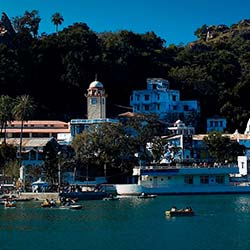
About The Raghunath Temple The Raghunath Temple is located in the serene hill station of Mount Abu in the state of Rajasthan, India. Dedicated to Lord Rama, the temple is a popular pilgrimage site for devotees and tourists alike. The temple is known for its stunning architecture and serene surroundings, making it a must-visit destination for those seeking spiritual solace and peace. Architecture Of Raghunath Temple The Raghunath Temple is a fine example of Rajputana architecture, with intricate carvings, beautiful sculptures, and ornate pillars adorning its structure. The temple is built using white marble and features a towering shikara that is a sight to behold. The main sanctum sanctorum houses the idol of Lord Rama, along with other deities like Sita, Lakshmana, and Hanuman. The temple also has a large courtyard where devotees can sit and meditate in a peaceful environment. History The Raghunath Temple was built by Maharaja Sawai Madho Singh of Jaipur in the 19th century. It is said that the king was a devout follower of Lord Rama and wanted to build a grand temple in his honor. The temple has since become a popular pilgrimage site for devotees from all over the country who come to seek the blessings of Lord Rama and other deities worshipped in the temple. Best Time To Visit The best time to visit the Raghunath Temple is during the winter months of October to March when the weather is pleasant and ideal for sightseeing. The temple is less crowded during this time, allowing visitors to explore its beauty and serenity in peace. The festival of Ram Navami, which celebrates the birth of Lord Rama, is also a great time to visit the temple as it is celebrated with much pomp and gaiety. How To Reach The Raghunath Temple is located in the heart of Mount Abu and is easily accessible by road. The nearest airport is in Udaipur, which is approximately 185 kilometers away from Mount Abu. The nearest railway station is Abu Road, which is well-connected to major cities like Delhi, Jaipur, and Ahmedabad. From Abu Road, visitors can take a taxi or a bus to reach the temple. Significance Of The Raghunath Temple The Raghunath Temple holds great significance for the devotees who believe that worshiping Lord Rama at the temple can bring them peace, prosperity, and happiness. The temple is also known for its spiritual ambiance and positive energy, making it a popular destination for those seeking solace and divine blessings. The annual festivals and rituals held at the temple attract a large number of devotees who come to witness the grand celebrations and seek the blessings of the deities.
Explore More
About The Shankar Math Temple The Shankar Math Temple, also known as Adhar Devi Temple, is a popular pilgrimage site for followers of Hinduism. The temple is perched on a hilltop, providing visitors with stunning panoramic views of the surrounding landscapes. The peaceful ambiance and spiritual aura of the temple make it a perfect place for meditation and introspection. Architecture Of Shankar Math Temple The architecture of the Shankar Math Temple is a fine example of traditional Rajasthani style, with intricate carvings and exquisite designs adorning the temple walls. The temple is made of white marble, giving it a pristine and divine appearance. The main sanctum sanctorum houses the idol of Lord Shiva, beautifully adorned with flowers and garlands by the devotees. History The history of the Shankar Math Temple dates back many centuries, with its origins shrouded in myth and legend. It is believed that the temple was built by a group of ascetics who were drawn to the spiritual energy of the place. Over the years, the temple has undergone various renovations and additions, but its core essence and sanctity remain unchanged. Best Time To Visit The best time to visit the Shankar Math Temple is during the winter months, from October to March when the weather is pleasant and cool. The temple sees a surge in visitors during the festival of Maha Shivaratri, celebrated with great fervor and devotion by the devotees. The monsoon season, from July to September, is also a good time to visit the temple, as the surrounding hills come alive with lush greenery and blooming flowers. How To Reach The Shankar Math Temple is easily accessible by road from Mount Abu, which is well-connected to major cities in Rajasthan and neighboring states. Visitors can hire a taxi or take a local bus to reach the temple, which is located a short distance away from the main town. The nearest railway station is Abu Road, which is around 28 kilometers from Mount Abu, and the nearest airport is Udaipur, about 185 kilometers away. Significance Of The Shankar Math Temple The Shankar Math Temple holds immense significance for the devotees who visit the temple seeking blessings and spiritual solace. It is believed that worshipping at the temple can bring peace, prosperity, and fulfillment in one's life. The serene surroundings and tranquil atmosphere of the temple make it a perfect place for meditation and self-reflection. Many visitors come here to offer prayers and seek divine intervention in their lives.
Explore MoreRajasthan Village Life Tour - 5 Days
5 Days/ 4 Night
Jodhpur - Khimsar - Nagaur
9 Nights - 10 Days Royal Kingdom Tour
10 Days/ 9 Night
Ajmer - Bikaner - Jaipur - Jaisalmer - Jodhpur - Pushkar - Udaipur
8 Nights - 9 Days Shades Of Culture Tour
9 Days/ 8 Night
Jaipur - Jodhpur - Mount Abu - Pushkar - Udaipur
4 Nights 5 Days Golden Triangle Tour
5 Days/ 4 Night
New Delhi - Jaipur - Agra
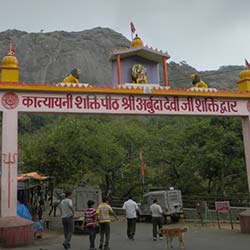
About The Adhar Devi Temple The Adhar Devi Temple is a popular religious site located in the hill station of Mount Abu in Rajasthan, India. Situated inside a cave on a cliff, the temple is dedicated to Goddess Durga, also known as Adhar Devi. The temple is a significant pilgrimage site for devotees who come to seek the blessings of the goddess. Architecture Of Adhar Devi Temple The Adhar Devi Temple has a unique and intriguing architecture. The temple is situated inside a natural cave that is perched on a cliff overlooking the beautiful landscape of Mount Abu. To reach the temple, visitors have to climb a series of steep stairs carved into the rock face. The cave temple is relatively small but exudes a serene and mystical atmosphere. Inside the temple, the idol of Goddess Durga is placed, adorned with traditional clothes and jewelry. History The history of the Adhar Devi Temple dates back several centuries. It is believed that the temple was established in the 14th century by Hindu saints who meditated in the caves of Mount Abu. The significance of the temple grew over the years, attracting devotees from far and wide. The temple has undergone several renovations and expansions over the years to accommodate the increasing number of pilgrims. Best Time To Visit The best time to visit the Adhar Devi Temple is during the winter months from October to March when the weather is cool and pleasant. The monsoon season from July to September also offers a lush green landscape, but it is advisable to avoid visiting during this time due to heavy rainfall. The temple can get crowded during festivals and special occasions, so visitors may want to plan their trip accordingly. How To Reach The Adhar Devi Temple is located in Mount Abu, which is well-connected by road and rail. The nearest railway station is Abu Road, which is about 28 kilometers away from Mount Abu. From Abu Road, visitors can hire a taxi or take a bus to reach the temple. The nearest airport is Udaipur Airport, which is about 185 kilometers away from Mount Abu. From the airport, visitors can hire a taxi or take a bus to reach the temple. Significance Of The Adhar Devi Temple The Adhar Devi Temple holds immense religious significance for devotees. It is believed that worshipping at the temple fulfills desires and brings prosperity and happiness. The goddess is worshipped for her protective powers and ability to overcome obstacles. Many devotees offer prayers and perform rituals at the temple to seek blessings for themselves and their families. The serene location of the temple adds to its spiritual ambiance, making it a peaceful place for meditation and contemplation.
Explore More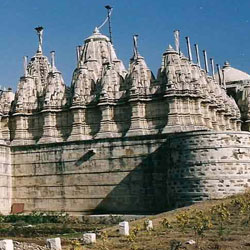
About The Gaumukh Temple In Mount Abu The Gaumukh Temple is a popular pilgrimage site located in the beautiful hill station of Mount Abu in Rajasthan, India. This temple is dedicated to Lord Shiva and is known for its unique architecture and serene surroundings. The name "Gaumukh" literally translates to "cow's mouth" in Hindi, and the temple gets its name from a natural spring that flows out of a rock shaped like a cow's mouth. Architecture Of Gaumukh Temple The Gaumukh Temple is built in a traditional Rajasthani style of architecture, with intricate carvings and beautiful stonework. The temple is located at the mouth of a gorge, and the natural spring flows into a sacred kund (tank) where devotees come to bathe and seek blessings. The temple complex also includes a small shrine dedicated to Nandi, the sacred bull who is believed to be the mount of Lord Shiva. History The Gaumukh Temple has a long and fascinating history, dating back to ancient times. It is believed that the temple was founded by Sage Vashishtha, a revered sage in Hindu mythology. According to legend, Lord Shiva himself appeared in the form of a cow to Sage Vashishtha at this sacred spot, which is why the temple is considered to be a highly auspicious and holy place. Best Time To Visit The best time to visit the Gaumukh Temple in Mount Abu is during the winter months, from October to March. The weather is pleasant and cool during this time, making it ideal for exploring the temple complex and enjoying the natural beauty of the surrounding hills. The monsoon season, from July to September, is also a good time to visit, as the lush greenery and fresh waterfalls create a magical atmosphere around the temple. How To Reach The Gaumukh Temple is located in the town of Mount Abu, which is well-connected by road to major cities in Rajasthan and neighboring states. The nearest airport is in Udaipur, which is about 185 kilometers away from Mount Abu. There are regular buses and taxis available from Udaipur and other nearby cities to reach Mount Abu. Once in Mount Abu, the temple is easily accessible by car or on foot. Significance Of The Gaumukh Temple The Gaumukh Temple holds great religious and spiritual significance for devotees of Lord Shiva. The natural spring that flows from the rock is considered to be holy water, and bathing in it is believed to cleanse one of sins and bring good fortune. Many pilgrims visit the temple to seek blessings for their families and loved ones, and to offer prayers to Lord Shiva for health and prosperity. The peaceful and tranquil atmosphere of the temple complex makes it a perfect place for meditation and spiritual reflection.
Explore More
About The Gaumukh Kund Temple The Gaumukh Kund Temple is a famous pilgrimage site located in Chittorgarh, Rajasthan. This ancient temple holds significant religious importance for the Hindu community and attracts devotees from all over the country. The temple is dedicated to Lord Shiva and is known for its unique architecture and spiritual ambiance. Architecture Of Gaumukh Kund Temple The Gaumukh Kund Temple is a stunning example of traditional Rajasthani architecture. The temple is built in a classic North Indian style, with intricate carvings and exquisite stone work adorning the walls and pillars. The main sanctum of the temple houses a sacred shivling, which devotees worship with great reverence. The temple complex also features a large kund (water tank) known as Gaumukh Kund, which is believed to have natural spring water flowing from a cow's mouth-shaped rock (Gaumukh). The temple is surrounded by lush greenery and offers a serene and peaceful environment for meditation and prayer. The temple premises are well-maintained, with beautiful gardens and pathways leading to different parts of the temple complex. Visitors can spend hours exploring the intricate architecture and soaking in the spiritual vibes of the Gaumukh Kund Temple. History The history of the Gaumukh Kund Temple dates back centuries, with legends and myths surrounding its origin. According to local folklore, the temple was built by a Rajput king in honor of Lord Shiva, who is believed to have appeared in the form of a cow to bless the king. The temple has since been a revered site for devotees seeking the blessings of Lord Shiva and is considered a sacred place for pilgrims. Over the years, the Gaumukh Kund Temple has undergone several renovations and restorations to preserve its historical and architectural significance. The temple continues to be a popular destination for religious ceremonies, festivals, and spiritual gatherings. Best Time To Visit The best time to visit the Gaumukh Kund Temple is during the winter months, from October to March when the weather is pleasant and cool. The temple is less crowded during this time, allowing visitors to explore the site comfortably and enjoy the peaceful surroundings. The temple also hosts special ceremonies and festivals during the winter season, adding to the spiritual charm of the place. How To Reach The Gaumukh Kund Temple is easily accessible by road, located in the heart of Chittorgarh city. Visitors can reach the temple by hiring a taxi or auto-rickshaw from the city center. The nearest railway station is Chittorgarh Junction, which is well-connected to major cities like Jaipur, Udaipur, and Delhi. For those traveling by air, the nearest airport is Udaipur Airport, approximately 100 kilometers away from Chittorgarh. Significance Of The Gaumukh Kund Temple The Gaumukh Kund Temple holds immense religious significance for devotees, who believe that worshipping at the temple can bring blessings and prosperity in their lives. The temple's kund (water tank) is considered holy, and many devotees take a dip in its waters as a form of purification. The natural spring water from the Gaumukh rock is believed to have healing properties and is used for various rituals and ceremonies.
Explore More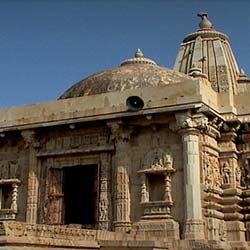
About The Kalika Mata Temple The Kalika Mata Temple, located in the city of Chittorgarh, Rajasthan, is a revered Hindu temple dedicated to Goddess Kali. This ancient temple holds great significance among devotees and tourists alike due to its historical importance and stunning architecture. Architecture Of Kalika Mata Temple The temple showcases exemplary Rajput architecture with intricate carvings, majestic domes, and beautiful sculptures. The main sanctum sanctorum of the temple houses an idol of Goddess Kalika, adorned with jewels and colorful clothes. The temple complex also features smaller shrines dedicated to various Hindu deities, surrounded by well-maintained gardens and pathways. History The Kalika Mata Temple has a rich history dating back to the 8th century, making it one of the oldest temples in Chittorgarh. It is believed that the temple was constructed by the King of Mewar, and over the centuries, it has been renovated and expanded by different rulers. The temple has withstood invasions, wars, and natural calamities, symbolizing resilience and devotion. Best Time To Visit The best time to visit the Kalika Mata Temple is during the Navratri festival, which is celebrated with great fervor and enthusiasm. The temple is decorated with lights, flowers, and garlands during this time, and devotees from far and wide come to seek the blessings of Goddess Kalika. The winter months, from October to March, are also ideal for a visit due to the pleasant weather. How To Reach The Kalika Mata Temple is situated in Chittorgarh, a historic city in Rajasthan. The nearest airport is in Udaipur, approximately 120 kilometers away, which is well-connected to major cities in India. Visitors can also reach Chittorgarh by train or road, as the city has a well-developed transport infrastructure. Once in Chittorgarh, the temple is easily accessible by taxi or auto-rickshaw. Significance Of The Kalika Mata Temple The Kalika Mata Temple holds immense significance for devotees who believe in the power and blessings of Goddess Kalika. It is said that prayers offered at this temple are answered, and devotees experience peace, prosperity, and protection from evil forces. The temple also attracts history enthusiasts and art lovers who appreciate the stunning architecture and cultural heritage of the region.
Explore More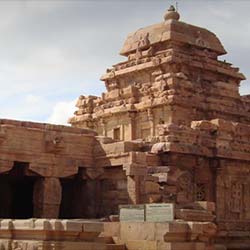
About The Kumbha Shyam Temple in Chittorgarh The Kumbha Shyam Temple, located in Chittorgarh, Rajasthan, is a magnificent temple dedicated to Lord Vishnu. This temple is a testimony to the rich heritage and culture of Rajasthan and is a must-visit for all history and architecture enthusiasts. Architecture Of Kumbha Shyam Temple The Kumbha Shyam Temple is a stunning example of Rajput architecture, with intricate carvings, exquisite sculptures, and towering spires. The temple is built in the traditional North Indian style, with intricate stone carvings depicting various mythological stories and scenes from Hindu scripture. The main sanctum sanctorum of the temple houses a beautiful idol of Lord Vishnu, adorned with jewels and flowers. The temple complex also includes several other shrines dedicated to various deities, as well as a large courtyard where devotees can sit and meditate. History The Kumbha Shyam Temple was built in the 15th century by Maharana Kumbha, a ruler of the Mewar dynasty. The temple was constructed to honor Lord Vishnu and to serve as a place of worship for the people of Chittorgarh. Over the centuries, the temple has undergone several renovations and additions, but its original grandeur and beauty have remained intact. Best Time To Visit The best time to visit the Kumbha Shyam Temple is during the winter months, from October to March, when the weather is cool and pleasant. This is also the time when several festivals and fairs are held in Chittorgarh, and visiting the temple during these events can provide a unique and immersive cultural experience. How To Reach The Kumbha Shyam Temple is located in Chittorgarh, Rajasthan, and can be easily reached by road, rail, or air. The nearest airport is Udaipur Airport, which is approximately 100 kilometers away from Chittorgarh. The temple is also well-connected by rail, with regular trains running to Chittorgarh from major cities like Delhi, Mumbai, and Jaipur. Once in Chittorgarh, visitors can hire a taxi or auto-rickshaw to reach the Kumbha Shyam Temple, which is located in the heart of the city and is easily accessible from all parts of Chittorgarh. Significance Of The Kumbha Shyam Temple The Kumbha Shyam Temple holds great religious and historical significance for the people of Chittorgarh and Rajasthan. It is believed to be a sacred place where devotees can seek blessings from Lord Vishnu and find inner peace and spiritual solace. The temple also serves as a reminder of Rajasthan's rich cultural heritage and architectural prowess, attracting tourists and pilgrims from all over the world. Visiting the Kumbha Shyam Temple is a truly enriching and enlightening experience, offering a glimpse into the glorious past of Rajasthan and the devotion of its people towards their gods and traditions.
Explore More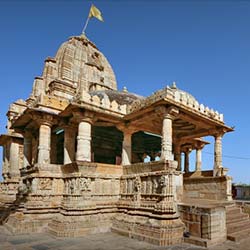
About The Meera Temple in Chittorgarh The Meera Temple, also known as the Meerabai Temple, is a famous monument located in the city of Chittorgarh in Rajasthan, India. This temple is dedicated to the famous saint and poetess Meerabai, who was a devotee of Lord Krishna. The Meera Temple holds great religious significance for followers of the Bhakti movement, as it is believed to be the place where Meerabai meditated and composed devotional songs in praise of Lord Krishna. Architecture of Meera Temple The Meera Temple is a beautiful example of Rajput architecture, with intricate carvings and designs adorning its walls and pillars. The temple is built in the traditional Rajasthani style, with a pyramidal roof and ornate decorations. The inner sanctum of the temple houses a statue of Meerabai, along with other idols of Hindu deities. The entire temple complex is surrounded by a large courtyard, with a beautiful garden and a water tank. History The Meera Temple was built in the 16th century by Rana Kumbha, the ruler of Mewar, in honor of Meerabai. Meerabai was a Rajput princess who renounced the material world and devoted her life to the worship of Lord Krishna. She is believed to have spent a significant amount of time at this temple, meditating and singing bhajans in praise of her beloved deity. The temple has since become a popular pilgrimage site for devotees of Meerabai and Lord Krishna. Best Time To Visit The best time to visit the Meera Temple is during the winter months, from October to March when the weather in Chittorgarh is pleasant and comfortable. This is also the time when many festivals and religious events are celebrated at the temple, making it a vibrant and lively place to visit. Visitors can also witness traditional Rajasthani music and dance performances during these festivals. How To Reach The Meera Temple is located in the city of Chittorgarh, which is well-connected by road, rail, and air. The nearest airport is in Udaipur, which is about 120 kilometers away from Chittorgarh. Visitors can also reach Chittorgarh by train, as the city has a major railway station that is well-connected to other cities in India. Once in Chittorgarh, the Meera Temple is easily accessible by local transport, such as auto-rickshaws and taxis. Significance Of The Meera Temple The Meera Temple holds great religious significance for followers of the Bhakti movement, as it is dedicated to a renowned saint and poetess. Devotees visit the temple to pay their respects to Meerabai and seek blessings for a happy and fulfilling life. The temple also serves as a cultural and historical landmark, preserving the legacy of Meerabai and her devotion to Lord Krishna. Visiting the Meera Temple is a spiritual experience that allows visitors to connect with the rich heritage and traditions of Rajasthan.
Explore More